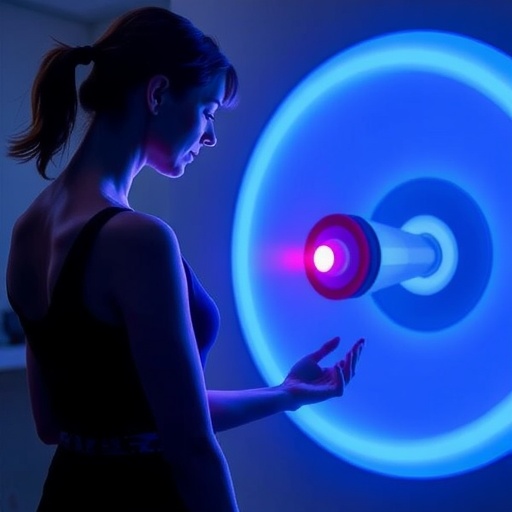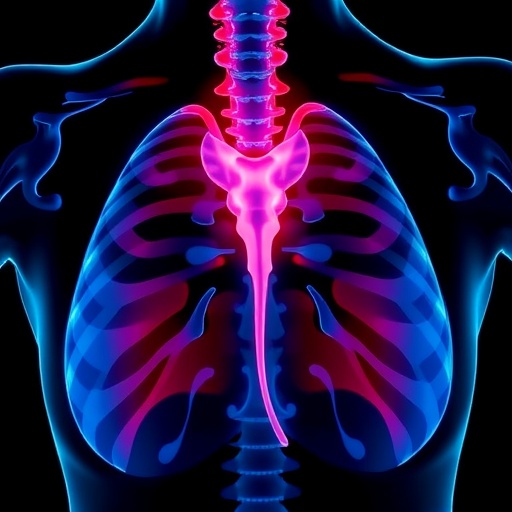A Landmark Study Compares Proton and Photon Therapies in Breast Cancer: Insights from the RadComp Trial
In a groundbreaking advancement for breast cancer treatment, the RadComp Consortium has unveiled pivotal findings from its large-scale randomized trial comparing proton radiation therapy with conventional photon radiation therapy in patients with non-metastatic breast cancer. Conducted under the auspices of the University of Pennsylvania and RTOG Foundation, this study represents the first rigorously controlled examination of these two prominent radiation modalities, shedding light on their impact on patients’ health-related quality of life (HRQOL).
The comprehensive RadComp trial enrolled 1,239 women who had been diagnosed with non-metastatic breast cancer and were scheduled to receive comprehensive nodal irradiation—a treatment strategy addressing both the tumor and regional lymph nodes. Participants were randomized to receive either proton or photon radiotherapy, enabling direct head-to-head comparison of these modalities within an ethically sound, trial-driven framework. The trial’s significance lies not only in the scale and randomized design but also in its focus on patient-centered outcomes rather than solely tumor control or survival metrics.
Proton therapy harnesses charged particles that deposit the majority of their energy at a defined depth, known as the Bragg peak, thereby minimizing radiation exposure to surrounding healthy tissues. Photon therapy, in contrast, utilizes high-energy X-rays that penetrate through tissue, depositing dose along the entire beam path. The theoretical advantage of protons involves sparing critical organs such as the heart and lungs, potentially reducing long-term toxicity. However, proton therapy is limited by higher costs, less widespread availability, and technical complexity, making comparative effectiveness data invaluable.
The primary outcomes examined in RadComp centered on HRQOL metrics, incorporating validated patient-reported instruments such as the PROMIS Fatigue scale, BREAST-Q assessing breast cosmetic satisfaction, and the FACT-B module evaluating functional wellbeing and breast cancer-specific quality of life. Secondary evaluations included FACIT-TS-G and the PRO-CTCAE to capture nuanced treatment-related adverse effects and patient satisfaction. By gathering longitudinal data at baseline and six months post-treatment, researchers sought to discern differences in fatigue, body image, and overall quality of life linked to treatment modalities.
Results demonstrated a remarkable parity between proton and photon therapy recipients in major HRQOL domains six months following radiation. Fatigue levels, cosmetic satisfaction, and overall functional outcomes did not differ significantly between the groups, underscoring that both radiation approaches are associated with excellent patient-reported outcomes in women undergoing comprehensive nodal irradiation. Intriguingly, secondary analyses indicated a modest preference among proton therapy patients for recommending their assigned treatment and willingness to undergo it again, signaling a potentially positive subjective experience.
Dr. Shannon M. MacDonald, leading the RadComp manuscript, emphasized that the trial’s completion represents a watershed moment in radiation oncology’s commitment to technology comparison. “Health-related quality of life is an essential endpoint,” Dr. MacDonald remarked, underscoring the broader imperative to harmonize clinical effectiveness with patient-centered outcomes. Despite awaiting the trial’s primary endpoint—which focuses on major cardiac events potentially arising years post-radiotherapy—the current HRQOL findings support clinician discretion in modality selection based on individual patient and disease characteristics.
The multidisciplinary nature of RadComp warrants special acknowledgment. Principal Investigators Drs. Alexander Lin and Bonnie Ky highlighted the collaboration of radiation oncologists, cardiologists, medical physicists, and patient participants. This synergy fostered robust trial design and meticulous outcome measurement, crucial to tackling the complex interplay between cancer therapy efficacy and long-term organ preservation. As cardiac toxicities remain a paramount concern with breast irradiation, especially in left-sided tumors, the forthcoming cardiac event data will be highly anticipated.
Funding support from the Patient-Centered Outcomes Research Institute, National Cancer Institute, and National Heart, Lung, and Blood Institute bolstered the trial’s rigorous methodology and comprehensive data collection. Supplementary resources from philanthropic foundations and institutional centers further facilitated this ambitious project, culminating in a dataset that can inform clinical guidelines and health policy. This investment reflects a broader trend in oncology research emphasizing comparative effectiveness and value-based care.
The RadComp trial’s comprehensive nodal irradiation context is particularly noteworthy. Patients receiving regional nodal radiation often experience higher radiation exposure to critical organs such as the heart and lungs, amplifying the importance of therapy modality choice. Proton therapy’s inherent dosimetric advantages theoretically translate to reduced incidental exposure, potentially mitigating cardiovascular and pulmonary sequelae. However, the current HRQOL data suggest that these dosimetric benefits may not yet translate to measurable differences in patient experience at 6 months, signifying the need for longer-term follow-up.
Importantly, the cost and accessibility of proton therapy remain determinants in its widespread adoption. Despite potential clinical advantages, proton centers are less ubiquitous and represent a significant financial burden. These pragmatic considerations, alongside equivalent HRQOL outcomes observed in RadComp, inform the nuanced decision-making process faced by clinicians and patients. Tailoring radiation modality selection to individual patient anatomy, tumor characteristics, and health system factors remains paramount.
In parallel with publication at the 2025 American Society for Radiation Oncology (ASTRO) Annual Meeting, the RadComp team has engaged with the broader oncology community through media outreach including a special podcast episode featuring Dr. MacDonald. This engagement facilitates knowledge dissemination and dialogue surrounding novel radiation modalities, driving awareness among clinicians, researchers, and patients alike.
As the leading randomized trial comparing proton versus photon radiation for non-metastatic breast cancer, RadComp sets a precedent in evaluating emergent cancer technologies through the lens of patient-centered endpoints. The team’s anticipation of the primary endpoint related to cardiac events underscores the longitudinal nature of therapy outcome assessment, vital for comprehensive risk-benefit evaluations. These findings mark a crucial inflection point in the trajectory of radiation oncology, blending technological innovation with holistic patient care.
Looking forward, integration of RadComp results with ongoing studies examining clinical efficacy, toxicity profiles, and economic analyses will be crucial. This trial exemplifies the promise of pragmatic, multi-disciplinary research collaborations in advancing cancer treatment paradigms. Clinicians are encouraged to continue individualized treatment planning, balancing evidence, patient preferences, and resource considerations while awaiting definitive long-term outcomes.
Ultimately, the RadComp trial not only illuminates the comparable impact of proton and photon radiotherapy on quality of life but also fosters an informed, patient-centered dialogue regarding the evolution of breast cancer care. As research continues to unravel the complex interdependencies of physics, biology, and patient experience, such landmark studies pave the way for optimizing therapeutic strategies and enhancing survivorship.
Subject of Research: Comparative Health-Related Quality of Life Outcomes in Proton versus Photon Radiotherapy for Non-Metastatic Breast Cancer
Article Title: Pragmatic Phase III Randomized Trial of Proton vs. Photon Therapy for Patients with Non-metastatic Breast Cancer Receiving Comprehensive Nodal Radiation: Health-Related Quality of Life Outcomes
News Publication Date: 2025, September-October
Web References:
RadComp Podcast — https://www.nrgoncology.org/Podcast
RTOG Foundation — http://www.rtog.org/
References:
MacDonald SM, Pugh SL, Paulus R, et al. Pragmatic Phase III Randomized Trial of Proton vs. Photon Therapy for Patients with Non-metastatic Breast Cancer Receiving Comprehensive Nodal Radiation: A Radiotherapy Comparative Effectiveness (RADCOMP) Consortium Trial: Health-Related Quality of Life Outcomes. Presented at the ASTRO Annual Meeting, San Francisco, CA, 2025.
Keywords: Breast Cancer, Proton Therapy, Photon Therapy, Radiation Oncology, Health-Related Quality of Life, Randomized Controlled Trial, Comprehensive Nodal Irradiation, Fatigue, Cosmetic Outcomes, Cardiac Toxicity, Comparative Effectiveness
Tags: advanced radiation modalities comparisoncharged particle therapy advantagescomprehensive nodal irradiation benefitshealth-related quality of life in cancer patientsminimizing radiation exposure in cancer treatmentnon-metastatic breast cancer therapypatient-centered outcomes in radiationproton vs photon radiation therapyRadComp trial breast cancer studyrandomized trial breast cancer treatmentRTOG Foundation breast cancer studyUniversity of Pennsylvania cancer research





